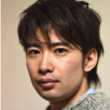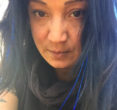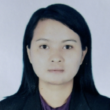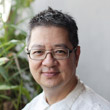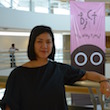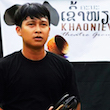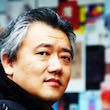Home » ricca ricca*festa Event Reports » Sigmund Roy Pecho
Sowing the Seeds for the Future Generation’s Harvest
The seeds have been planted. Diligently, we need to embrace the accountability of watering and nurturing these seedlings, and let it grow until the days of harvest. Let this be a piece of inspiration to further improve the aims and activities of the Asian Theatre for Young Audiences.
On the last week of July 2016, Asian Theatre for Young Audience produced a week-long celebration and festivity of theatrical performances for children. It required an overflowing amount of dedication and conviction for such committed theatre practitioners to organize and mount the ricca ricca*festa. This festival, on an empirical notion, aims to generously provide venues for young children to be in the theaters, and experience a total encounter with theatre and at the core, art.
In the many situations that simultaneously exist and occur across the globe, many believe in the potency of theatre and arts in general to inspire and enkindle a conscientious soul in the young - a passing of the torch, of fire, of light to the future generation of stewards of life and living on earth. The fire and seeds are what we hope to nurture for the young.
This report is pretty much autobiographical as I write it fueled by how I experienced some of the days of the festival. This report does not only document moments of the festival, it also cuts through certain points of arguments that may perhaps help ricca ricca*festa, and the whole of Asian Theatre for Young Audiences, in committing to their philosophy of theatre-ship for the young, and young artists.
I decided to departmentalize my major points in this report. Allow me, if you may.
The Theatres for Children in the Philippines
The reports (during the discussion on July 29) of my Filipino friends are very remarkable and inspiring. I, being a member of Teatrong Mulat ng Pilipinas, a Theatre committed to performing for Children by imploring the art of Puppetry, confess how little I know about the activities and projects of other institutions (in art) for Children in the Philippines. Teatrong Mulat and Anino Shadowplay Collective hold workshops about the art of puppetry (shadowplay in the case of Anino), while Tanghalang Pilipino and Sipat Lawin Ensemble cater to the youth through their specific arms in the company. Significantly, Sipat Lawin Ensemble has these inspiring programs worth emulating: The Theatre in a Back Pack and the Project Banig. Mostly, these programs are new to most of us, but hearing the reports on this makes me believe in the potential of these programs. The former is encapsulated as a workshop program, while the latter is a storytelling project. I know though that I am limitedly exposed to these programs, which consequently lessens my capacity to talk about it in specific detail. Tanghalang Pilipino, on the other hand, similar with Teatrong Mulat, partnered with UNICEF in conducting workshops for the youth. Tanghalang Pilipino is focused on adolescents, while Teatrong Mulat interestingly aimed its most recent partnership with UNICEF for Day Care Workers in some regions hit by Super Typhoon Haian.
Other very remarkable programs are the Philippine Government’s very own National Festival of Talents, and PETA’s Children Arts Festival.
Although there are quite a number of active programs of theatre dedicated for children, most of these are temporally limited to a certain number of days. The challenge I believe is how to sustain this theatre-ship for the young.
Questions
Quite similar to the Philippines, most ASEAN countries also hold festivals and workshops for the young. As I was listening to the open discussion of ATYA members and guests, I began to list down a number of questions as guide to ricca ricca*festa. Honestly, we have yet to absorb these questions, and try to answer them through how we envision and conduct festivals in general. Allow me to outline the questions:
- Ultimately, the very concern for our audience is a key factor why produce such festivals. What is the quality of Audiences-ship that we seek to develop in organizing a festival?
- In the most recent trends of holding festivals, the concept of “collaboration” has been practiced. What are other modes of Collaboration that we may try out inside and outside the duration or realms of festivals?
- How do we enrich the notion of Residency programs, a very dynamic mode of exchange of ideas, cultures, and traditions?
- What is an Enforced Audience-ship?
- There was a point raised on increased professionalism. So how exactly does this manifest if most festivals confront financial challenges and rely on volunteerism and goodwill? Should there be state policies on projects such as festivals?
Personal Insights
To me, ricca ricca*festa has been a rich encounter to many of the delegates. It was a venue of shared learning and open discussions. A festival generous enough to allow each delegate to see more performances of artists fundamentally advancing their skill set. Apart from these basic gains from a festival, what is very inspiring is the joy of building communities of artists. This will later on help develop other modes of collaboration and insights that may serve the best interest of to whom we perform for.
And these performances for the children of our nations are our little seedlings that we need to nurture. In time, these children will harvest them, hopefully inspired to bring forth the best for their time. This is an offering that we are committed to carry out. And we will one day smile as we harvest the fruits of our labor.
Sigmund Roy G. Pecho
Member, Teatrong Mulat ng Pilipinas






